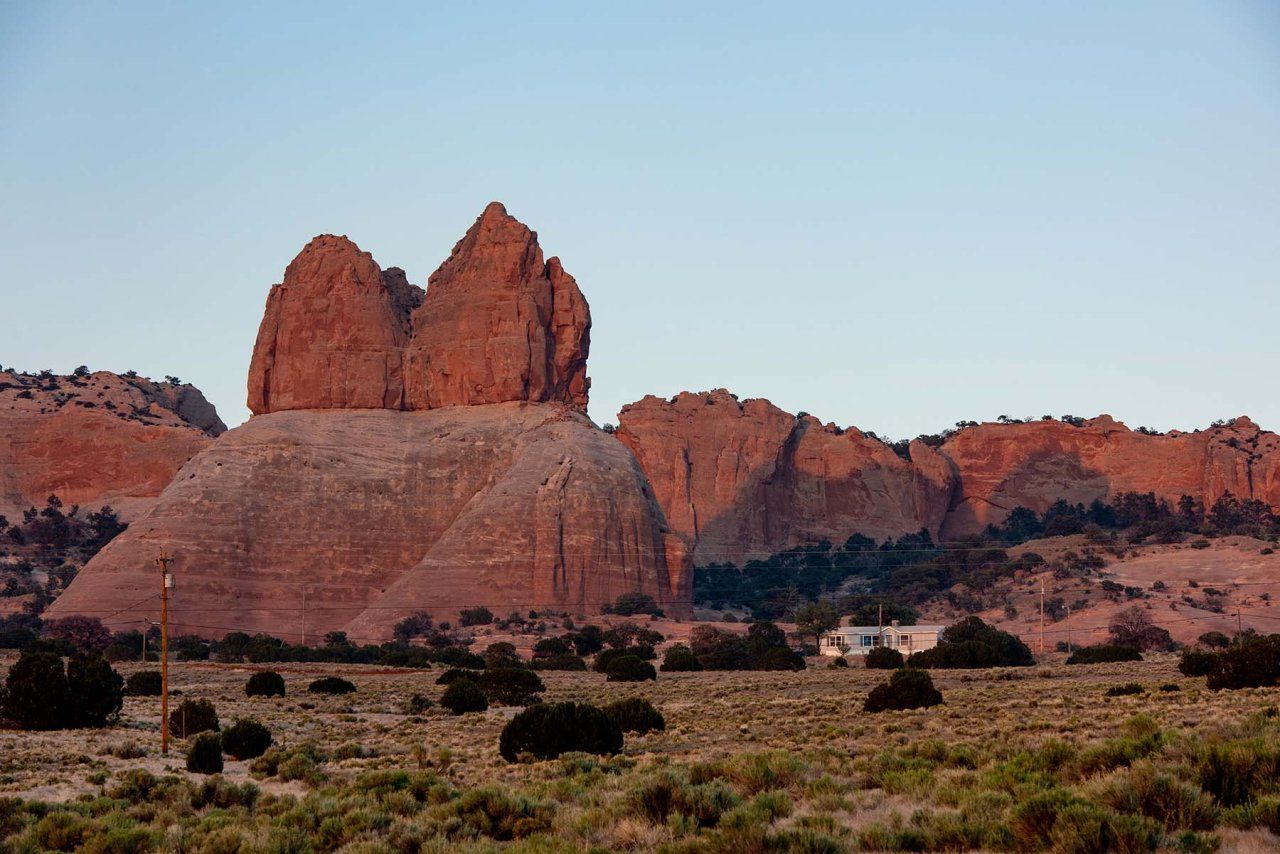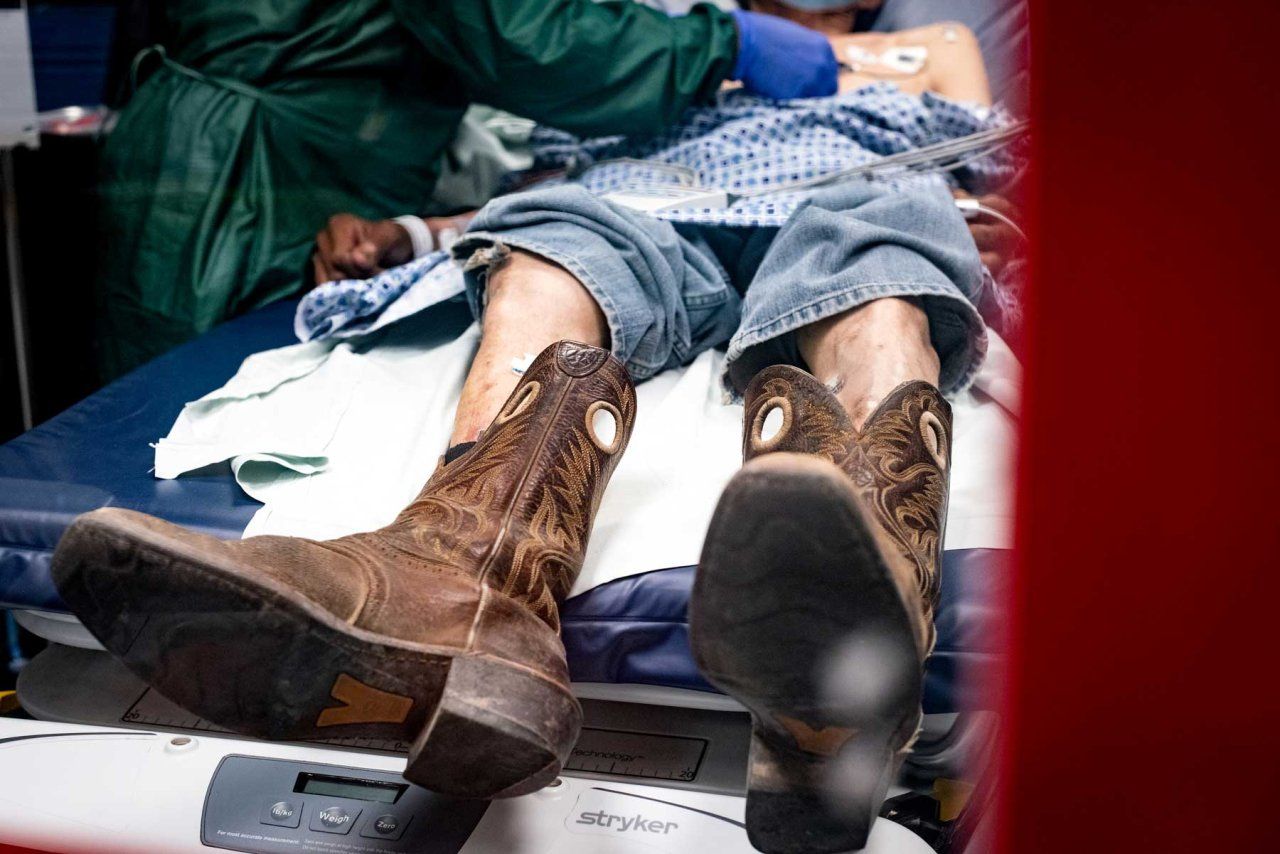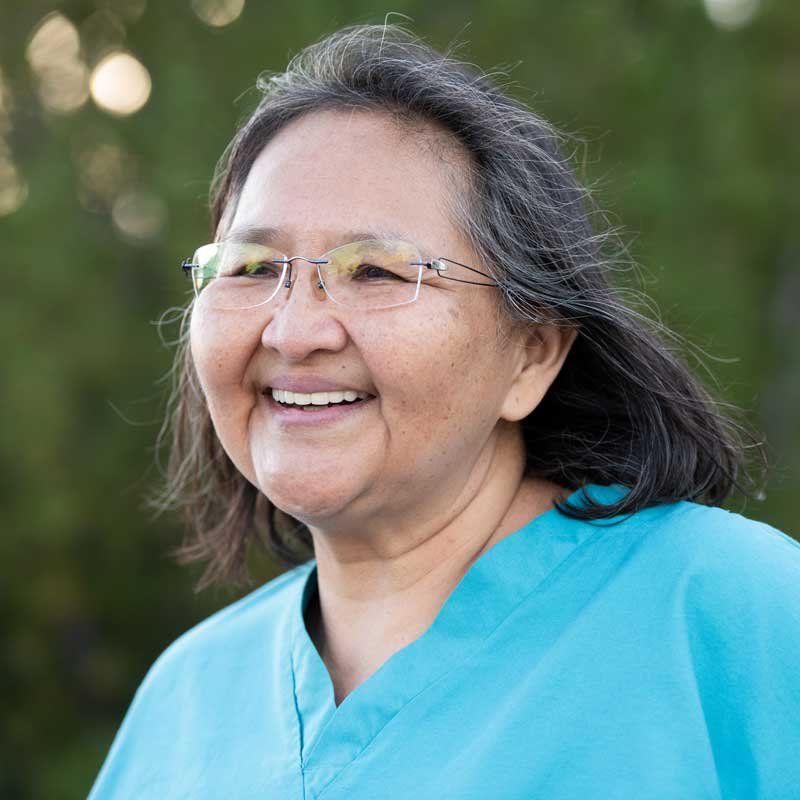This article contains references to suicide, which may be triggering. If you or someone you know has a mental illness, is struggling emotionally or has concerns about their mental health, there are ways to get help. If you are in crisis, call or text 988 to connect with the 988 Suicide & Crisis Lifeline.
There is no word for "suicide" in Navajo. Yet, it's on the minds of children as young as 8 at the Gallup Indian Medical Center, says Adeline June, MPH, who coordinated the hospital's suicide prevention program for five years before recently joining the Crownpoint Health Care Facility on the Navajo reservation's eastern border as a health promotion specialist.
Located about two hours west of Albuquerque, the Gallup hospital in New Mexico sits between the Navajo and Zuni reservations, making it one of Indian Health Service's busiest care facilities.
The history of injustices affects our population: I can see it, I can hear it.
During the 1700s and 1800s, Native American tribes were forced into treaties with the U.S. government, robbing them of their land and resources. From 1869 into the 1960's, nearly 83% of indigenous school-age children were taken from their families and placed in boarding schools to assimilate.
"The history of injustices affects our population: I can see it, I can hear it," explains June, who is Navajo, or Diné as the Navajo call themselves. She is also one of nearly four dozen fellows who are part of the UC San Francisco Health, Equity, Action and Leadership (HEAL) Initiative.
"When we worked in the emergency room, for instance, most of our patients had a history of trauma, especially at home with older generations who experienced things like boarding schools, racism, assimilation and substance use," June says.
In an epidemic stretching back decades, suicide rates among American Indian and Alaska Native communities are up to three times higher than those among the general population. But that's just one of many health disparities June and her team encounter.
The Navajo reservation is the U.S.' largest such tract of land, spanning parts of Arizona, New Mexico and Utah and stretching more than 27,000 square miles. Still, 1 in 3 Navajo families live without piped water, electricity or both, according to 2020 data. Grocery stores are scarce, helping to fuel high rates of diabetes and obesity. And the reservation is dotted with more than 500 abandoned uranium mines, which have contaminated water supplies and homes.
The two-year HEAL fellowships support health care workers interested in working with underserved communities. Since 2015, HEAL has trained more than 200 clinicians and other health care workers in areas like leadership, advocacy and the societal factors that shape people's health. HEAL operates in 10 countries, but has a special focus on serving the Navajo Nation, which continues to suffer from the consequences of colonialism, including poor access to health care.

"HEAL began working in the Navajo Nation because a couple of UCSF chief residents had started working there and they spoke of the power of the work, and the dependency on temporary staffing agencies," explains HEAL co-founder and UCSF Professor of Medicine Sriram Shamasunder, MD. "We knew that global health needed to be about health equity regardless of location, so Navajo Nation was a compelling place."
To help plug the health care worker gaps in the Navajo Nation and other sites around the world, HEAL recruits two types of fellows. U.S.-trained physicians can split the second year of their fellowship between health care facilities in the Navajo Nation or rural Salinas, near California's Central Valley, before then joining sites in one of nine countries, including Haiti, Uganda and Nepal. Alternatively, health care workers already working at one of HEAL's sites around the world can apply to be site fellows. Unlike rotating physicians, site fellowships are open to a broad range of workers, from program managers to midwives and nurses. Site fellows are trained and mentored alongside rotating fellows while remaining to serve their own communities.
Today, a quarter of HEAL fellows come from the Navajo Nation.

What is culturally responsive?
In 1958, Taylor McKenzie, DO, MD, became the first Navajo doctor. Adriann Begay, MD, HEAL's Navajo Nation senior advisor, was 12 when she first met McKenzie at the old Fort Defiance Indian Hospital on the Navajo reservation. That day, McKenzie asked Begay if she wanted to shadow him on his hospital rounds.
"Growing up on the reservation - especially as a beneficiary of the U.S. Indian Health Service - you never saw a physician who looked like you," remembers Begay. "We walked into the old hospital and there was a patient in traction. He walked over to him, and the first thing out of his mouth was, 'Yá'át'ééh shicheii, haa lá ánít'é' - which is, 'Hello, grandpa, how are you doing?'"
Begay had watched her mother and aunts translate for the mostly white physicians who came and went from the hospital while growing up. But had never seen a doctor address a patient in Navajo. "Kids can't dream about being something they've never seen," she says, reflecting back on that moment. "I was like, 'I could do this, I could be a doctor.'"
"Kids can't dream about being something they've never seen. I was like, 'I could do this, I could be a doctor.'"
Adriann Begay, MD

Today, less than 1% of U.S. physicians come from American Indian or Alaska Native communities. Begay is among them. After working for the Indian Health Service for 21 years, she joined HEAL in 2021.
One of Begay's mentees is HEAL fellow Adeline June. Thanks to June and her team, suicide screenings have increased across the community in Gallup. June's team was one of the first to translate a common medical center suicide screening tool from English into Navajo - and then implement it in a culturally competent way.
"When we implemented the tool, we offended many traditional Navajo elders in our community. Death is not something that we speak about - it's taboo," says June, explaining that, traditionally, Navajos believe that speaking about death can draw it near. "But in Gallup, we worked with the community to gain their trust, just showing that we're dependable and we're here for the community."
A way to decolonize wisdom
The same treaties that forced Native American tribes from their lands also bound the U.S. government to provide them with health care, thus creating the federal Indian Health Service. But the agency has been chronically underfunded, resulting in vacancy rates for clinical positions such as physicians, nurses and dentists as high as 31%.
Nearly 1 in 3 HEAL fellows who rotate into Navajo Nation sites choose to stay on permanently after their fellowship. Since 2015, HEAL has added at least 20 physicians to Navajo health facilities.
The approach is unique, says HEAL site fellow alum Cristina Rivera Carpenter, PhD, MSN, RN-BC, who grew up in South Dakota and is Mestiza. "As a site fellow, you respect rotating fellows for their choice of coming to work with you in solidarity but you're not privileging the rotating fellows because they're US-trained physicians," she explains. "HEAL brings everyone together on an equal basis, and you grow together over the two years. That decolonization of whose wisdom is centered in a fellowship based at an academic medical center is pretty amazing."
Each year, HEAL fellows provide care to more than 25,000 Navajo patients. Through the fellowship's innovative model, HEAL physicians - including obstetricians, surgeons and anesthesiologists - provide care at a fraction of the cost of the temps otherwise used to fill the gaps.
How a 'HEAL baby' got her name
Coworkers at Tséhootsoi Medical Center, in Ft. Defiance, Arizona, in the Navajo Nation, encouraged Rivera Carpenter to apply to HEAL. The initiative allowed her to complete a PhD in nursing, and she credits Begay's support and mentoring as she juggled family, research and multiple jobs. Before eventually taking a nurse executive position at Tséhootsoi Medical Center, Rivera Carpenter served as HEAL's Navajo Nation program officer for nearly two years.
About the time Rivera Carpenter completed her dissertation, she welcomed her fifth child, a daughter. "We call her my 'HEAL baby,'" Riviera Carpenter jokes. "I was expecting when working with HEAL, cared for during pregnancy by a HEAL fellow, and she was delivered in Gallup by another HEAL fellow."
One of the baby's middle names? "Adriann," after Begay.
"The most important thing about the HEAL fellowship is that I don't feel alone - we live in different areas or countries, but we face similar conditions and are passionate about the communities we serve," June says. "We don't always have the answers but I have support - mentors and fellows who can listen to me and help me with ideas about what I can do to address challenges."
For June, HEAL embodies a promise she made long ago. "As a young Navajo woman, I was always told by my grandfather in Navajo to, 'Get an education and come back home and help your people.' That has remained with me."
Today, Navajo clinicians like June are honoring their past while playing a crucial role in charting their people's future, according to former Navajo Nation President Jonathan Nez. While in office, Nez called HEAL's empowerment of Navajo clinicians an important step to true self-determination.
"Our young people and allies through programs like HEAL hold a great deal of valuable information we need to continue our Navajo way of life ... while updating our systems and community initiatives," Nez said in 2022. "We envision being able to take on a lot more responsibilities to embrace true self-governance ... and empowering our health care workers is a major step in that direction."






